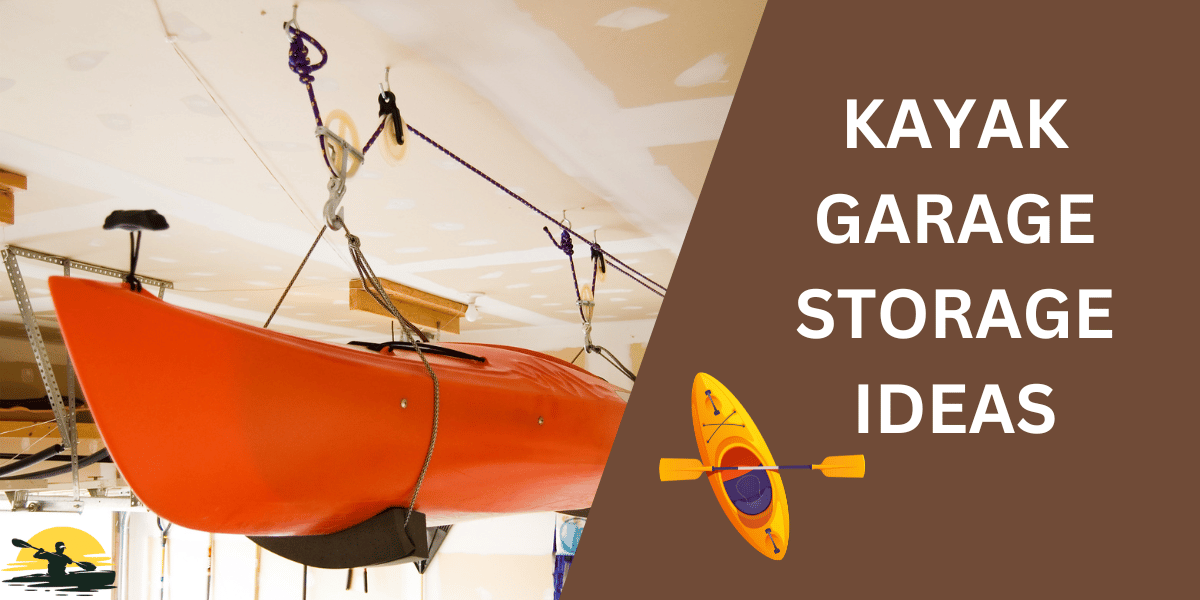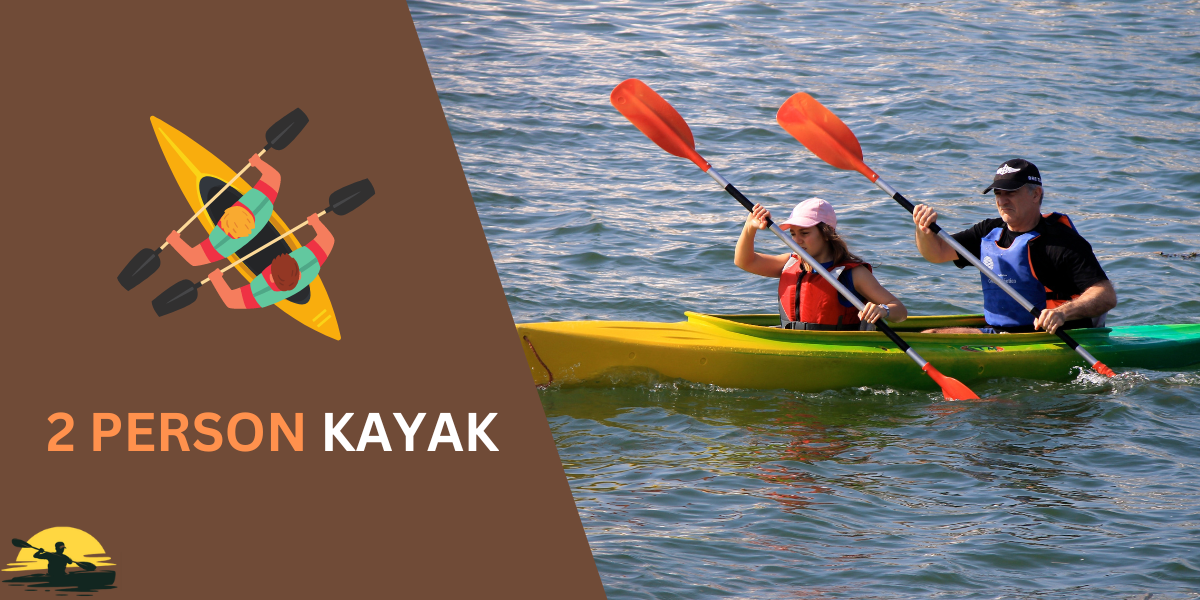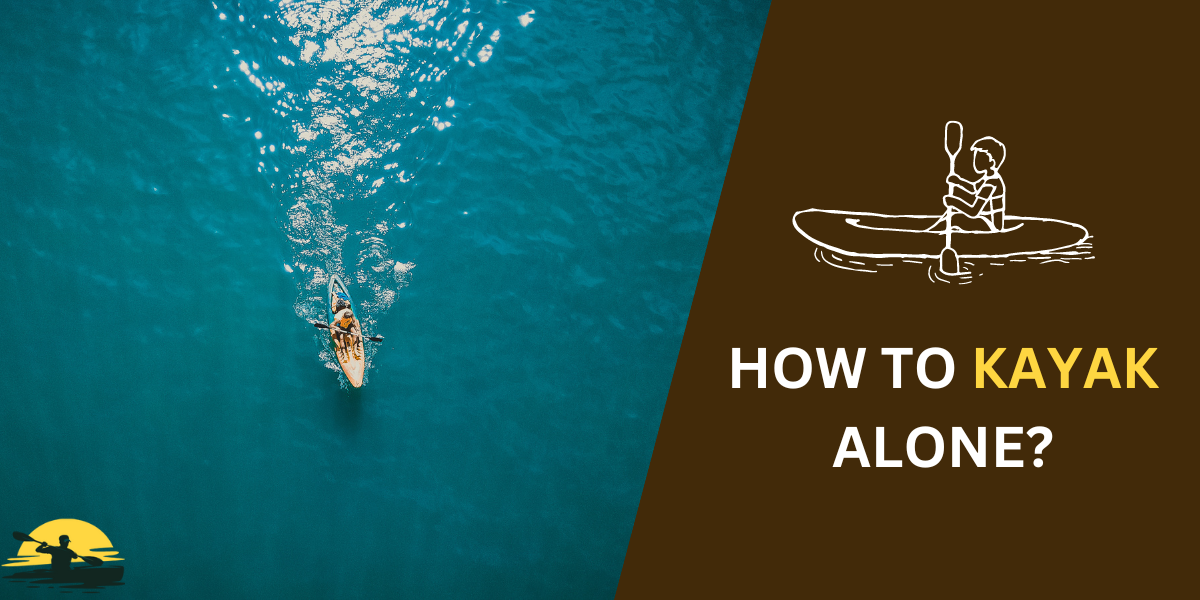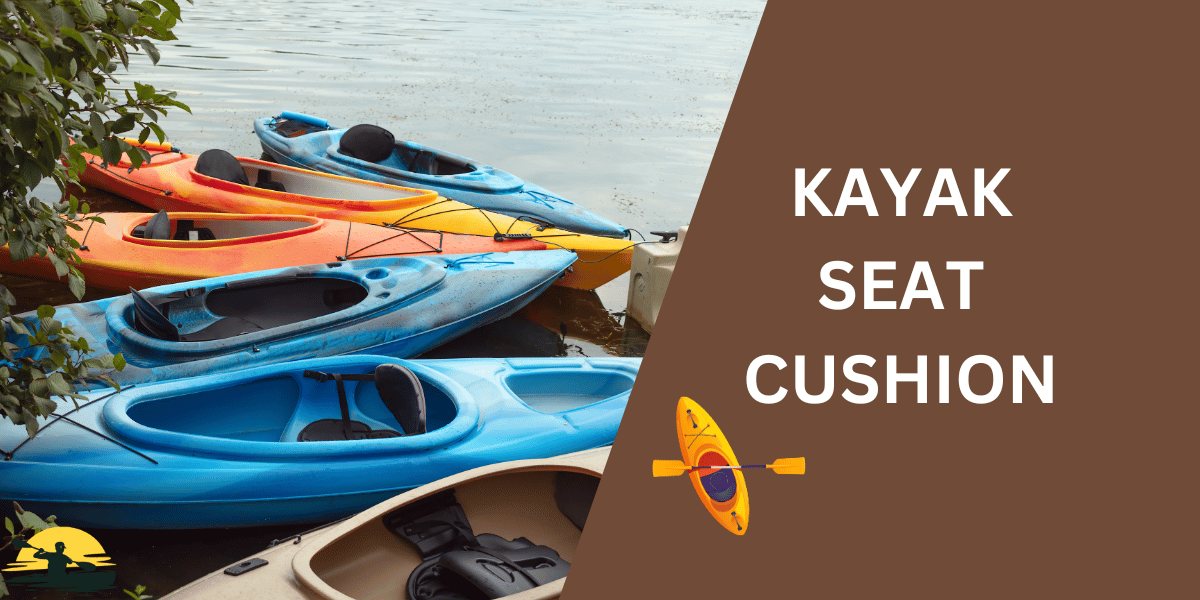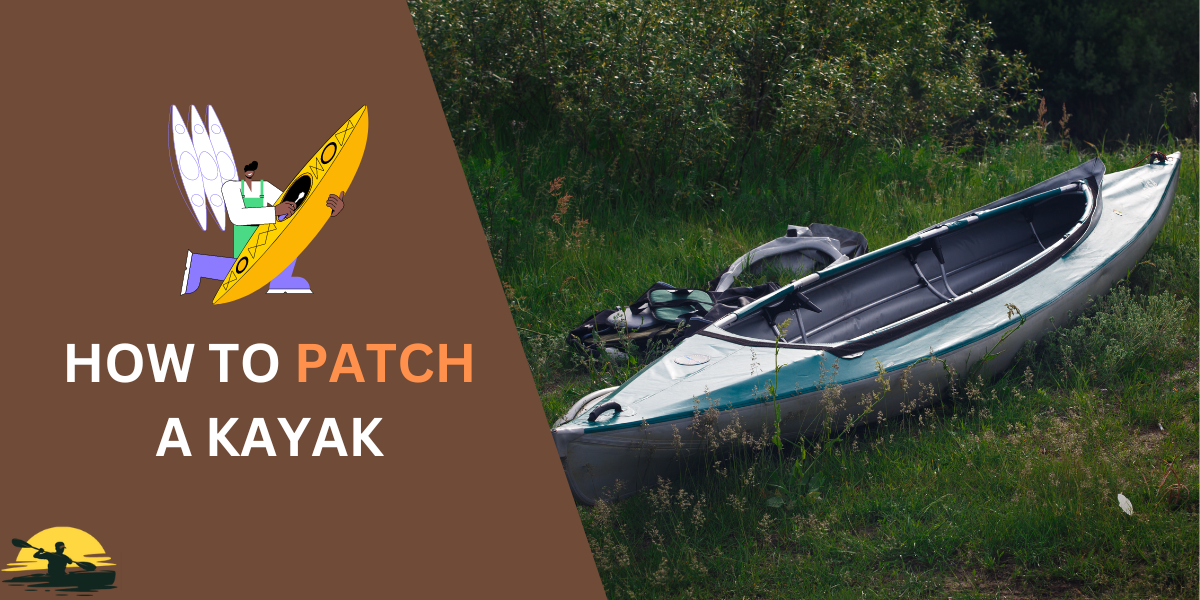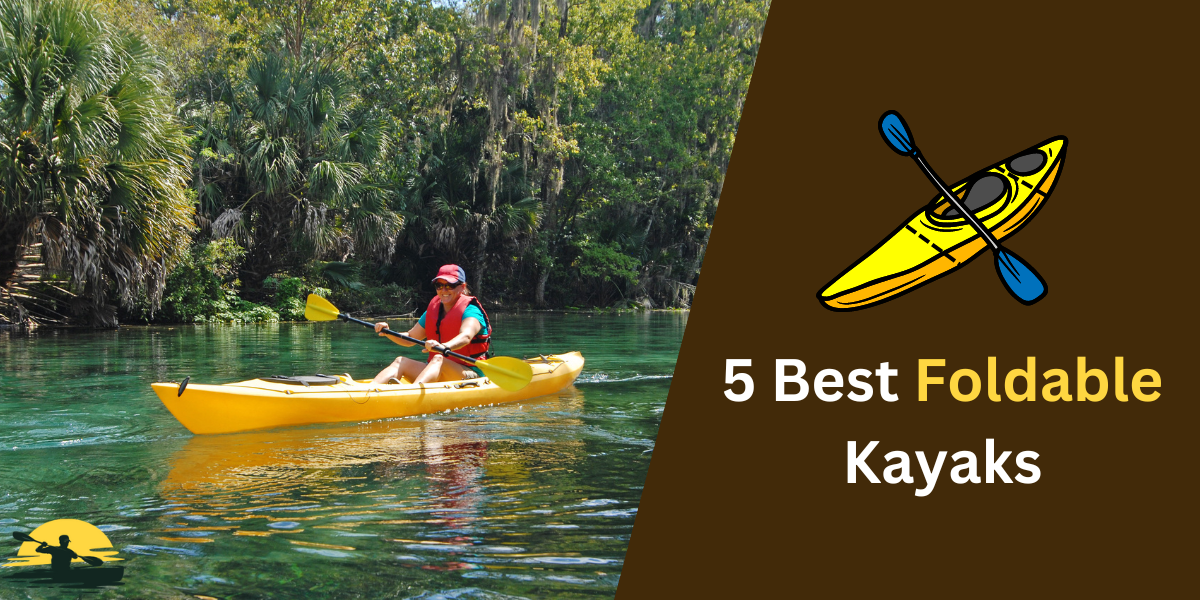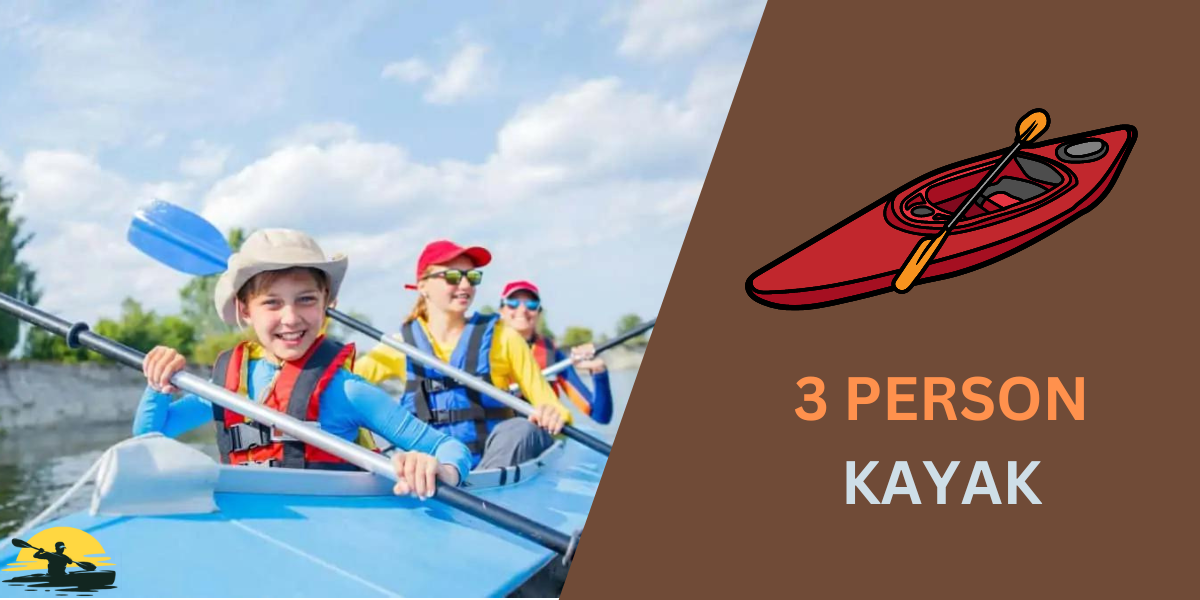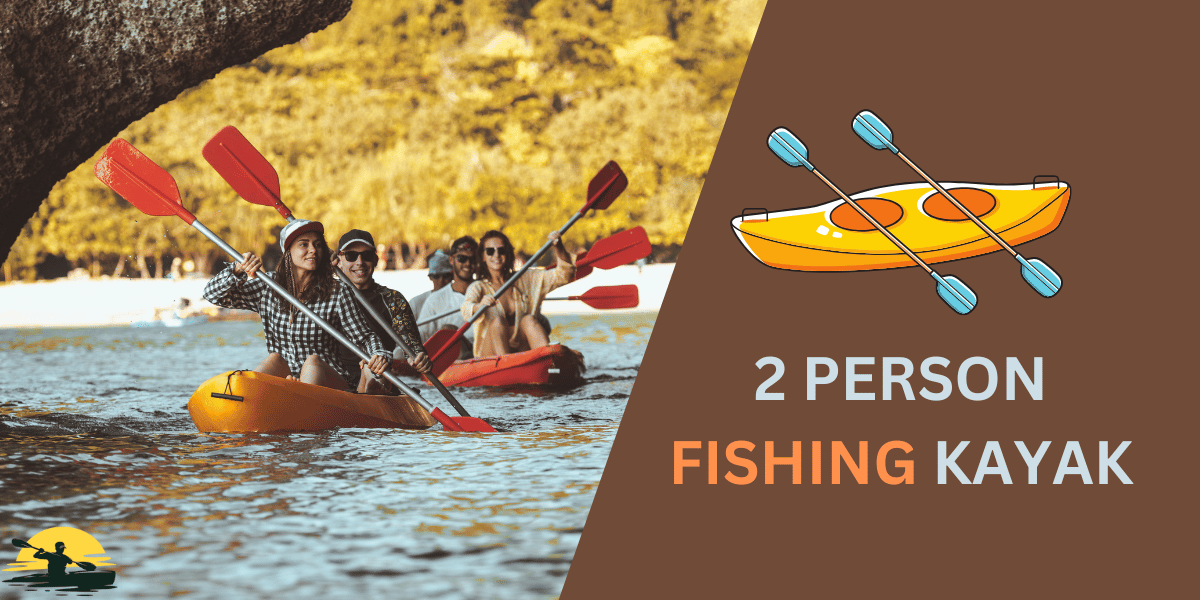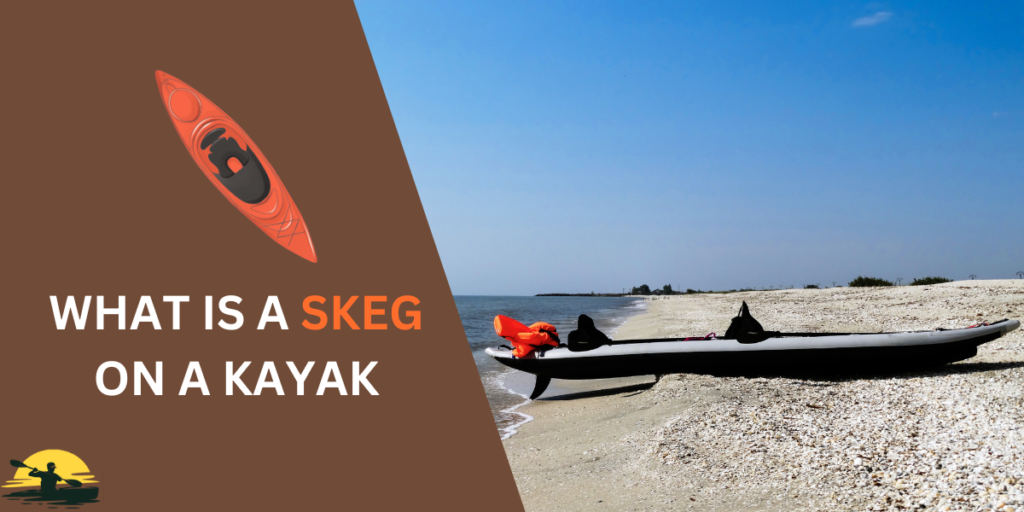
Have you ever been out paddling and felt like the wind had it out for you?
Choppy water and strong winds can make it hard to keep your kayak going straight, no matter how good your skills are.
This is frustrating and tiring!
Many kayaks are designed with a specific hull shape for better performance, but this can make tracking a hassle in challenging conditions.
That’s where skegs come in!
Skegs are small retractable fins on the stern (rear) of the kayak.
They pop down from the hull to provide much-needed stability and help your vessel track in a straight line, even when the wind wants to blow you off course.
This can be a real game-changer in challenging conditions, offering a sense of reassurance and control.
Kayak Skegs Explained
- What it is: A retractable fin at the back (stern) of your kayak.
- What it does:
- Helps your kayak track straight (especially in wind and waves)
- Adds a bit of stability
- Makes paddling less tiring
- Not for: Shallow water, tight maneuvering, or whitewater kayaking
- Best for Longer trips, open water, and challenging conditions
- Like a rudder? Nope! Rudders steer, and skegs go straight.
What is a Skeg?
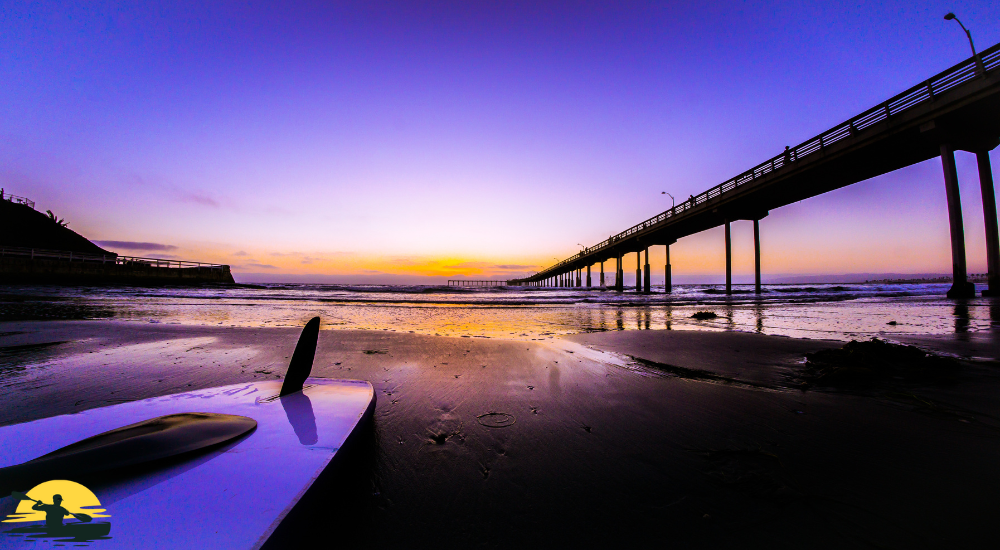
Let’s get the basics down…
A skeg is like a hidden fin tucked away at the back (stern) of your kayak.
Think of it as an extra bit of your boat that extends down into the water.
Most people don’t notice them at first because they can be pulled up inside the hull when not in use.
What do skegs do?
Their main job is to help your kayak track straight.
“Tracking” means how well your boat goes in a straight line without veering off course.
Skegs also add a touch of stability, making your kayak feel less wobbly.
Now, there is a little trade-off – skegs aren’t for steering.
They mostly help you go straight, while a rudder (a different thing entirely) is what you use for turning.
How Does a Skeg Work?
Imagine your kayak is trying to spin around sideways in the wind.
A skeg acts like an anchor at the back of your boat, making it harder to turn.
It can make the boats super stable.
Here’s why:

- More underwater length: A deployed skeg makes your kayak longer underwater. This creates something called a “pivot point” near the back. The longer the kayak is underwater, the tougher it becomes to make it spin.
- Resisting the forces: Picture trying to turn your kayak on land versus in the water. More of your boat’s surface area is in contact with the water when the skeg’s down, adding resistance.
Helpful Analogy: Think of how the rudder on a big ship makes it steer—a skeg is similar, but its main job is to keep you going straight! Many old-town people don’t know about all this.
When to Use a Skeg
Skegs are lifesavers in a few specific situations:
- Windy Days: If you’re battling a strong wind that keeps pushing you sideways, a skeg will make your life way easier.
- Choppy Water: When the waves rock your kayak, a skeg helps prevent you from getting spun out.
- Open Water Crossings: Crossing a lake or a bay? A skeg makes it easier to maintain your course and reach your target destination.
- Long Paddles: Paddling for a while? A skeg saves you energy because you don’t have to work as hard to paddle in a straight line.

Benefits of Using a Skeg
- Less work for you: The kayak tracks are better on their own, so you can focus on the good stuff—paddling and enjoying the view.
- Smoother experience: Your kayak feels more stable and less likely to surprise you.
- Enjoyment boost: Kayaking is way more fun when you’re not wrestling the boat
When Not to Use a Skeg
There are times when a skeg isn’t the best choice.
Here’s why:
- Shallow Water: Rivers with rocks or very shallow areas are risky with your skeg down. It can hit the bottom and get damaged.
- Obstacles: If you’re paddling in a place with lots of logs, rocks, or other things to maneuver around, you want your kayak to turn sharply. A skeg will get in the way.
- Whitewater Kayaking: If you’re into the thrill of rapids and fast-moving rivers, you need your kayak to be extra maneuverable. A skeg will hinder quick turns.
Just so you know, skegs are mainly for keeping your kayak going straight, not for steering. They will help a little if you need to make sharp turns.
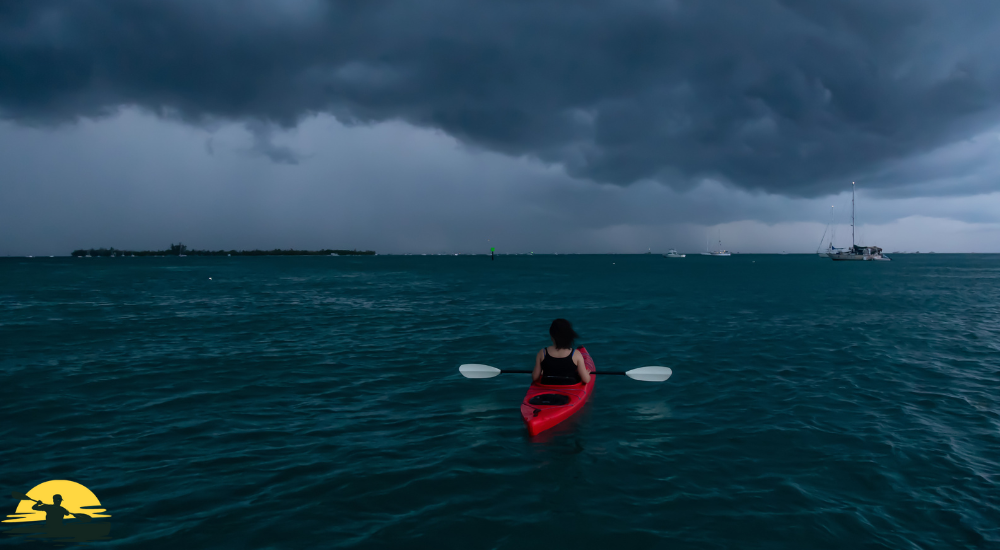
Types of Skegs
Not all skegs are made equal!
Here are the two main types you’ll encounter:
- Fixed Skegs: These are built right into the kayak’s hull (the bottom part). They’re tough and simple, but you can’t adjust them. If they’re down, they’re down!
- Retractable Skegs: These are way more common. They live in a little compartment inside the kayak. You use a slider or lever (usually near the cockpit) to pop them down or pull them back up inside. This gives you more control based on the conditions.
A Note on Materials: Skegs are usually made of plastic or a strong composite material. Both work well, but composite skegs might be a bit lighter.
Functionality Over Everything: Regardless of the type, the most important thing is that the skeg does its job! It should add that bit of extra tracking and stability you need.
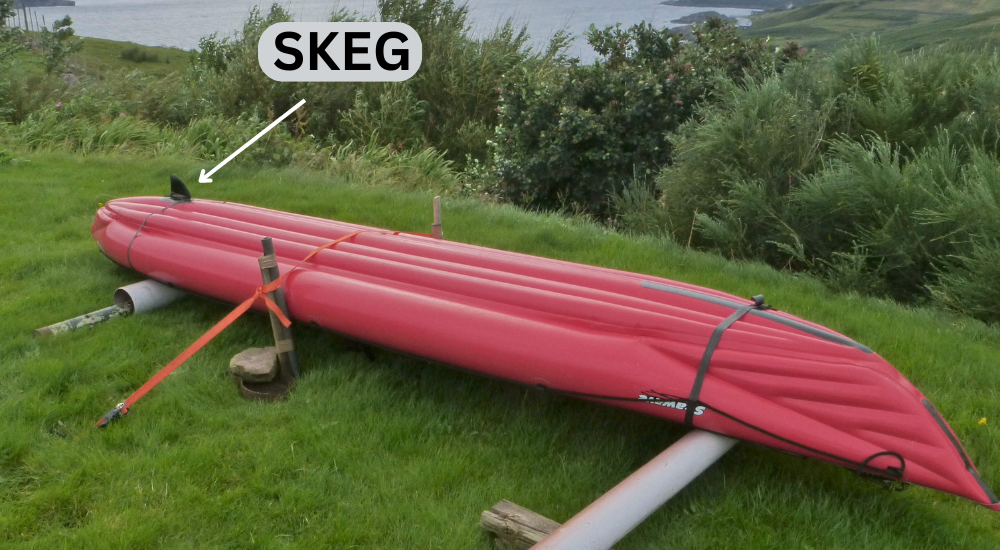
Skeg vs. Rudder – What’s the Difference?
You might hear the word “rudder” tossed around when talking about kayaks.
It’s easy to mix them up, but skegs and rudders do different things:
- Skeg: Think “straight line.” A skeg is your best friend for staying on course, especially in windy conditions. The rear hatch of the skeg is very important for stab
- Rudder: Think “steering wheel.” A rudder is a blade attached to the back of your kayak that you control with your feet. It helps you make sharper turns and maneuver with precision.
When to Choose Which
- Mostly going straight? A skeg is perfect.
- Need lots of control and turning? Get a kayak with a rudder.
- The Best of Both Worlds: Many touring and sea kayaks have BOTH a skeg and a rudder, giving you the best of both!
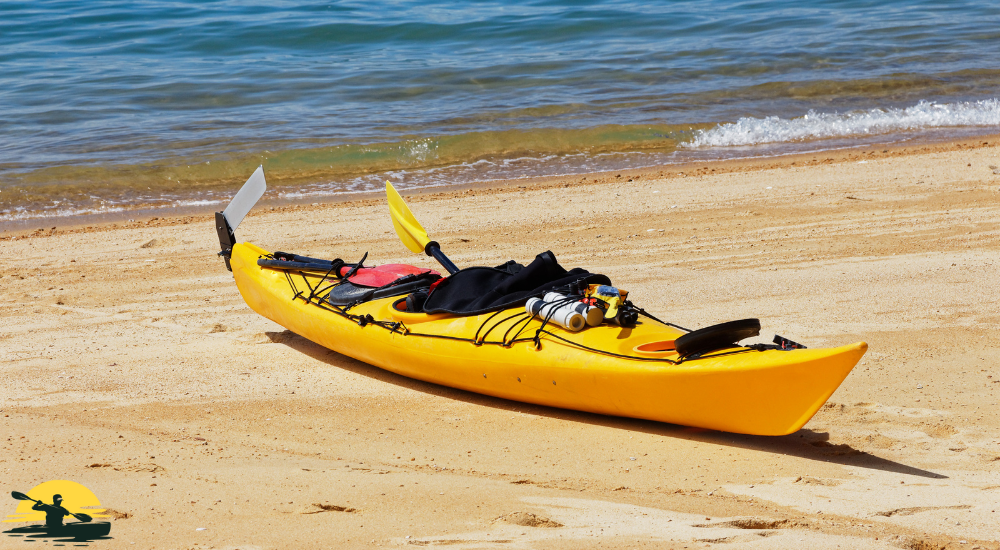
Do I Need a Skeg on My Kayak?
The answer depends on how and where you like to kayak:
- Short, calm water paddles: If you stick to small lakes or protected areas with mild weather, you might not need a skeg.
- Longer adventures, open water, or windy days: Skegs make a huge difference in these scenarios, helping you fight the wind and waves.
Think about your kayak: Some kayaks are designed to track really well on their own. Others… not so much. If your boat tends to wander, a skeg could be a game-changer.
Think about your goals: Want to try longer trips or explore more challenging waters? A skeg can be a helpful aid on your kayaking journey.
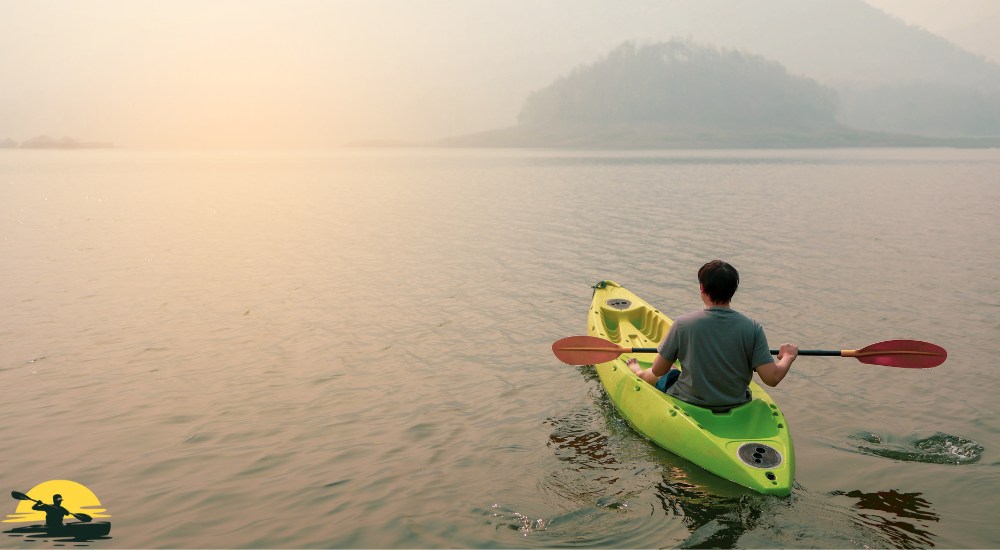
A Few More Factors
- Cost: Kayaks with skegs might cost a bit more, so consider your budget.
- Weight: Skegs add a tiny bit of weight to your boat.
- Features: Does the kayak already have other things to help with tracking, like a particular hull shape or design features?
How to Decide
- Talk to experienced paddlers: Ask friends or folks at a kayak shop for advice.
- Read online reviews: See what people say about specific kayaks with and without skegs.
- Try before you buy: If possible, rent a kayak with a skeg to see how it feels.
Ultimately, it’s your call! A skeg can be a super useful tool to make your kayaking adventures easier and more fun.
Conclusion

Think of a skeg as your secret weapon against windy days and wobbly kayaks.
It might seem like a small thing, but it can completely change how your kayak handles the water.
With a skeg, you can ditch the frustration and focus on exploring, fishing, or just enjoying the ride!
If you’re ready to take your kayaking adventures to the next level, consider a boat with a skeg.
It is the upgrade that helps you paddle further, with less effort, and have more fun.
Frequently Asked Questions
What’s the difference between a skeg and a rudder?
Skegs are all about tracking – helping your kayak go straight, especially in challenging wind and water conditions. Rudders are foot-controlled blades that let you steer the boat and make sharp turns. Some kayaks have just a skeg, while others designed for longer touring trips may feature both.
Can I add a skeg to my existing kayak?
Sometimes! This depends on whether your kayak has storage space and storage compartments are built to accommodate one. If you decide a skeg is something you need, it’s usually easier to buy a new kayak with a built-in skeg.
Do skegs make kayaks harder to turn?
Slightly. A deployed skeg can make sharp, fast turns a bit more challenging. It provides stability and a smoother ride in exchange for that bit of extra maneuverability.
Do skegs provide stability?
Yes! While their main job is tracking, skegs also help your kayak feel less wobbly. This is especially helpful in choppy water or when battling strong winds. Thigh braces are very important.
Are skegs worth the extra cost?
If you mostly do short, casual paddles in calm water, maybe not. However, if you want to try longer trips, open water, or windy conditions, a skeg can transform your paddling experience, likely making it worth the cost.


